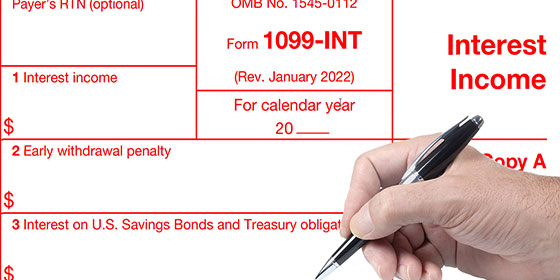Having a pet can be one of life's greatest joys, but with it comes some natural worries. One such worry is the cost of vet bills due to unforeseen medical issues that may arise. Traditionally, getting pet insurance for your furry friend was considered an extra expense and hassle because the monthly premiums increase as your pet ages.
However, today, various policies offer more stability in budgeting without sacrificing high-quality coverage or care – including plans where you don’t have to worry about increasing premiums as your pet ages. We will explore these options and potential advantages so that finding the right policy for your and your pet’s lifestyle goals becomes easier.
How does pet insurance work?

Pet insurance works in much the same way as human health insurance. You pay a monthly premium; if your pet gets sick or injured, the insurer covers most of the cost associated with treatment.
Depending on your chosen policy, coverage can include anything from checkups to accidents to emergency care or surgery. Pet insurance generally does not cover pre-existing conditions, but policies may be flexible regarding “wellness” care, such as annual shots and routine exams.
Why do pet insurance premiums increase each year?

Pet insurance premiums are usually tied to your pet's age. As your pet ages, they become more likely to develop certain health problems and require more expensive treatments. Many insurers increase their yearly premiums to compensate for this risk to cover additional costs associated with older pets.
Loss of an existing discount
In addition to increased premiums, some insurers may reduce or eliminate discounts associated with the policy if your pet reaches a certain age. This means you could pay more than expected for coverage of older pets.
General inflation, increased operating, and veterinary costs
Inflation can also lead to increased premiums. As the cost of providing medical care for animals rises, so do insurance rates. This could be due to rising overhead associated with veterinary clinics and hospitals or increased wages paid to staff.
Policies where premiums don’t increase with age?
Many companies now offer plans that guarantee no rate increases due to age or pre-existing conditions. These policies help ensure you can always obtain coverage if your pet gets sick or injured without worrying about increasing premiums yearly.
Healthy Paws Pet Insurance
This policy covers all illnesses and accidents, including orthopedic costs and alternative therapies like acupuncture or hydrotherapy.
Embrace Pet Insurance
Embrace covers hereditary and congenital conditions, preventive care, alternative treatment options, and other wellness services with no age-based premium increases.
ASPCA Pet Health Insurance
This coverage includes 90% reimbursement on most covered items with the option of adding accident-only coverage at a lower cost than fully comprehensive policies. There are also no age-based rate increases for cats and dogs over six.
Trupanion Pet Insurance
Trupanion offers lifetime coverage for your pet’s illness and accidents with no age-based rate increases.
Petplan Pet Insurance
This policy covers up to 90% of your pet’s medical costs, including orthopedic treatments, alternative therapies, and preventive care. Age-based rate increases don’t apply to pets over the age of eight.
24PetWatch Pet Insurance
This plan includes coverage for hereditary conditions with no age-based rate increases on cats or dogs over seven.
Hartville Pet Insurance
Hartville offers comprehensive coverage for all conditions with no annual premium increase due to age or pre-existing condition exclusions.
Nationwide Pet Insurance
This policy covers long-term illnesses, hereditary conditions, and alternative therapies with no age-based rate increases.
No matter which policy you choose, read the fine print of your pet insurance plan carefully. This will ensure that you know exactly what is covered in your pet's policy and any limits or exclusions that may apply. By shopping around and comparing different policies, you can find the right coverage for your pet without worrying about increasing premiums due to age.
Advantages of Getting Pet Insurance That Doesn’t Increase With Age
The main advantage of obtaining pet insurance is that it provides financial security against unexpected medical costs for your beloved pet. Suppose your furry friend unexpectedly has an accident or develops a condition that requires expensive medical care. In that case, you can rest easy knowing that your pet insurance will cover most expenses.
Financial security
Pet insurance with no increasing premiums ensures you can provide medical care for your pet without breaking the bank.
Peace of mind
Knowing that your plan will cover any unexpected vet bills allows you to focus more on enjoying life with your furry friend and less on the cost of care.
Flexibility
Policies that don’t increase annually give you more freedom to choose the coverage options, such as comprehensive or accident-only plans, without worrying about arbitrary age restrictions or increasing costs due to age.
Accessible Care
Certain policies may provide discounts on preventive care, such as annual exams or vaccinations, to help ensure your pet stays healthy and happy even as they age.
Comprehensive Coverage
Many policies offer comprehensive coverage for various conditions, including hereditary and congenital issues, with no age-based rate increases.
Peace of mind and better budgeting
With no annual premium increases to worry about, you can create an accurate budget for your pet’s care without the fear of rising costs in the future.
More options available
Pet insurance that doesn’t increase due to age or pre-existing conditions means more companies are willing to provide coverage for older pets who may have higher medical needs.
By researching different plans and comparing prices, you can find the right policy for you and your pet's lifestyle goals without worrying about increasing premiums due to age. No matter what policy you choose, make sure it offers comprehensive coverage and flexible terms so that you can always provide the best care for your furry friend.
By investing in pet insurance with no annual premium increases, you can ensure your pet's medical needs are met without worrying about breaking the budget or compromising on quality of care. With more companies offering plans that don’t increase due to age or pre-existing conditions, finding the right coverage for older pets is easier.
FAQS
At what age should you take out pet insurance?
Taking out pet insurance as soon as possible is best to get comprehensive coverage. However, some insurers offer plans that don’t increase due to age or pre-existing conditions, so you can still find coverage for older pets.
Is it worth getting pet insurance for a 7-year-old dog?
Yes, it’s still worth getting pet insurance for a 7-year-old dog. Many insurers offer plans that don’t increase due to age or pre-existing conditions so that you can get comprehensive coverage for any age pet.
What age is best to buy a dog?
The best age to buy a dog is generally 6-8 weeks. They’re old enough to have been weaned and socialized but young enough for you to start training them early. Puppies at this age are also generally healthier and less prone to behavioral problems. This is the ideal window of time to bring a new pup home.
Conclusion
Pet insurance that doesn’t increase with age is often hard to find, but you now know of a reliable provider that can give your furry family members the protection they need and the peace of mind you deserve. By choosing pet insurance for your beloved animals, you’ll be reassured that no matter what comes their way, they’ll have the health care they need without worrying about how it will affect their finances. With a plan tailored to your pet's needs and budget, there has never been an easier and more affordable option to keep them healthy, happy, and living their best life.



